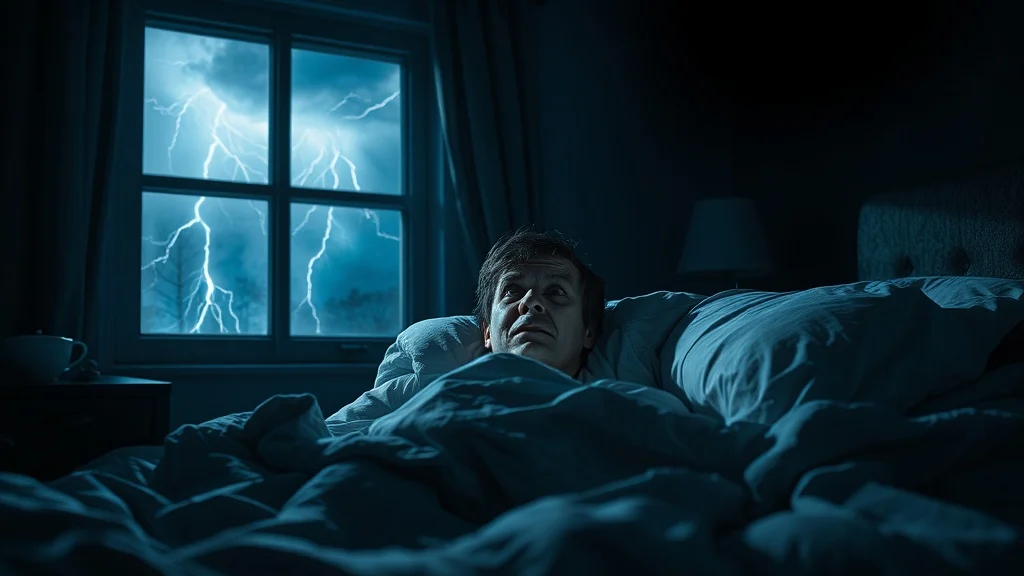9 Demographics of Individuals Prone to Dreams with Negative Influences
Want a Personalized Dream Interpretation?
Curious about how people like you interpret this dream symbol? Explore personalized interpretations tailored to your demographic. Get personalized insights for free!
Get Free Interpretation Now →Table of Contents
1. People Experiencing Emotional Distress
For individuals grappling with emotional turmoil, dreams often unveil a mirror into their subconscious, revealing hidden fears, anxieties, and buried emotions. Certain dream symbols emerge as harbingers of negative influences, warning of potential obstacles or internal struggles that warrant attention.
Shadowy Figures: These elusive figures represent repressed aspects of oneself or fears that lurk in the darkness. They symbolize inner conflicts, unresolved traumas, or unresolved guilt.
Falling: A common dream for those experiencing anxiety or insecurity. Falling signifies a loss of control, vulnerability, or fear of failure. It can suggest a sense of impending doom or a feeling of being overwhelmed.
Being Trapped: Dreams of being confined or imprisoned indicate a sense of restriction or powerlessness. They may reflect feelings of being controlled or unable to escape a difficult situation.
Water: While water often symbolizes life and renewal, it can also be a source of fear or anxiety in dreams. Murky or turbulent water represents emotional instability, drowning represents a feeling of being overwhelmed, and floating alone can signify social isolation.
Mirrors: Mirrors in dreams reflect our self-image and inner thoughts. Broken mirrors symbolize shattered self-esteem, while dirty or cloudy mirrors indicate a lack of clarity or self-deception.
Natural Disasters: Dreams of earthquakes, floods, or tornadoes represent overwhelming emotions or life-changing events that feel out of control. They can symbolize the destruction of relationships, loss of security, or a sense of impending chaos.
Animals: Certain animals carry negative connotations in dreams. Spiders represent fears or phobias, snakes symbolize betrayal or deception, and bats indicate a fear of the unknown or darkness.
2. Individuals with Anxiety Disorders
For those struggling with anxiety, dream symbolism can often reflect their inner turmoil and worries. Nightmares or vivid dreams featuring:
- Threatening figures: Monsters, attackers, or pursuers represent perceived threats or anxieties.
- Falling or drowning: Loss of control, a sense of vulnerability, or overwhelming feelings.
- Being trapped: An inability to escape or cope with stressful situations.
- Failure or humiliation: Concerns about performance, self-esteem, or unmet expectations.
- Darkness or closed spaces: Anxiety-provoking thoughts or fears of the unknown.
3. Those Struggling with Depression
Dream Symbolism in Depressed Individuals: Negative Influences

Individuals grappling with depression often experience vivid and disturbing dreams, which can provide valuable insights into their subconscious. Here are some common negative dream symbols that these individuals may encounter:
-
Darkness and Shadows: Darkness often represents feelings of loneliness, despair, and hopelessness. Shadows can symbolize hidden fears or repressed emotions that are weighing heavily on the dreamer's mind.
-
Falling or Drowning: These dreams can evoke sensations of powerlessness, insecurity, or a sense of being overwhelmed by life's challenges. They may indicate feelings of inadequacy or a lack of control.
-
Animals with Negative Connotations: Snakes, spiders, or rats can trigger feelings of fear, anxiety, or disgust. These dreams could suggest unresolved fears or traumas that need to be addressed.
-
Death or Loss: Dreams about death or losing loved ones can reflect a sense of hopelessness, isolation, or a fear of abandonment. They may also symbolize the "death" of a part of oneself or a change in life circumstances.
-
Physical Pain or Illness: Dreams involving pain or illness can indicate emotional distress, anxiety, or a feeling of being disconnected from the body. They may also symbolize unresolved physical or mental health issues.
-
Nightmares: Recurring nightmares are often a sign of unresolved trauma or lingering emotional pain. They can disrupt sleep and exacerbate symptoms of depression.
By understanding these negative dream symbols, individuals can gain a deeper understanding of their emotions and the challenges they are facing. It can also empower them to seek professional help and develop coping mechanisms to manage their depression more effectively.
4. People Coping with Trauma
Traumatic experiences can profoundly impact our sleep, leading to vivid and disturbing dreams. For individuals grappling with trauma, certain dream symbols may hold particular significance and reflect the lingering effects of their experiences.
-
Darkness and Shadows: Darkness and shadows often represent fear, uncertainty, and the unknown. In dreams, these symbols can evoke feelings of being trapped, vulnerable, and alone. They may also symbolize unresolved emotions or suppressed memories that are emerging from the subconscious.
-
Pursuit and Entrapment: Dreams involving being chased, hunted, or trapped can trigger feelings of anxiety and helplessness. These symbols may represent the ongoing sense of threat and persecution that survivors of trauma often grapple with.
-
Loss and Separation: Dreams of losing loved ones, objects, or possessions can symbolize the profound sense of loss and separation experienced by trauma survivors. They may also reflect the emotional consequences of the traumatic event, such as the loss of a sense of safety or control.
-
Fire and Destruction: Dreams involving fire or destruction can be indicative of the internal turmoil and emotional pain associated with trauma. These symbols may represent the feeling of being consumed by emotions, or the destruction of one's identity or sense of self.
-
Water and Suffocation: Dreams of drowning, being trapped in water, or being overcome by a flood can symbolize the overwhelming emotions and feelings of helplessness that trauma survivors may experience. These dreams may reflect the struggle to navigate and cope with the emotional turmoil and intensity that comes with trauma.
5. Individuals Facing Major Life Stressors
For individuals enduring intense life stressors, dreams can become a profound reflection of their inner turmoil. Negative influences manifest in their dreams as symbols that mirror their anxieties, fears, and perceived threats.
Common Negative Dream Symbols:
- Darkness and Shadow: Embody feelings of uncertainty, hopelessness, and isolation.
- Being Chased or Trapped: Represents a sense of powerlessness and vulnerability to external forces.
- Falling or Sinking: Symbolizes a loss of control or a feeling of inadequacy.
- Monsters and Predators: Manifest fears of persecution, harm, or failure.
- Bad Omens: Such as broken mirrors or spilled salt can indicate anticipatory anxiety or a belief in negative outcomes.
Dream Interpretation:
Exploring these symbols within the context of stressors faced by the dreamer can provide valuable insights. For instance, a dream of being chased by a predator might suggest that the individual feels overwhelmed by a specific challenge or threat. Conversely, dreaming of falling could symbolize a fear of failing to meet expectations or a loss of security.
Understanding the Impact:
Negative dream symbols can have a significant impact on daily life. They can perpetuate feelings of anxiety, disturb sleep, and hinder problem-solving abilities. By identifying and interpreting these symbols, individuals can gain a deeper understanding of their stress triggers and develop coping mechanisms to mitigate their influence.
6. Those Dealing with Relationship Issues
Nightly visions can reveal underlying relationship dynamics and challenges. For individuals navigating relationship complexities, certain dream symbols may hint at negative influences. Here are some examples:
- Snakes: Snakes often symbolize betrayal, deception, or hidden threats. They can represent a manipulative partner, a toxic relationship, or the fear of being hurt.
- Spiders: Spiders can symbolize entrapment, secrecy, or a feeling of being overwhelmed. They may indicate a controlling partner or a relationship that feels suffocating.
- Bats: Bats are associated with darkness, uncertainty, and fear. They can represent the unknown aspects of a relationship or the fear of loss or abandonment.
- Crowds: Crowded dreams can signify feeling overwhelmed by relationship drama, social pressure, or overwhelming obligations.
- Falling: Falling dreams are often interpreted as a loss of control or a fear of failure. In a relationship context, they may represent the fear of losing a partner or a feeling of instability.
- Drowning: Drowning dreams can symbolize feeling overwhelmed by emotions or a sense of helplessness. They may indicate a relationship that is draining one's energy or a fear of being consumed.
- Being chased: Dreams of being chased can represent a sense of threat or anxiety in the relationship. They may indicate a power imbalance or a feeling of being pursued or pressured.
7. People Exposed to Negative Environments
For those who endure harsh and distressing environments, dreams can become a canvas for the negative influences that permeate their waking lives.
Exposure to violence, poverty, trauma, and other adversities can leave an indelible mark on the psyche. These experiences can manifest in dreams as:
- Frightening or threatening figures: Monsters, strangers, or animals that represent the insecurities and fears lurking in the subconscious.
- Nightmares with vivid scenes of violence or danger: Recurring nightmares can replay traumatic events or reflect the fear and anxiety of the dreamer's reality.
- Symbology of loss or abandonment: Dreams of empty rooms, broken objects, or lost loved ones can point to feelings of loneliness, isolation, or a sense of being disconnected.
- Dreams about negative relationships or conflicts: Relationships fraught with tension or abuse may be reflected in dreams that feature arguments, emotional turmoil, or betrayal.
- Feelings of helplessness or powerlessness: Dreams where the dreamer is unable to escape or control their surroundings can mirror the challenging circumstances they face in waking life.
These negative dream symbols serve as a window into the subconscious, revealing the psychological toll that adverse environments can take. By understanding and interpreting these dream symbols, individuals can gain insights into their own emotions and work towards coping mechanisms and strategies for navigating the challenges they face.
8. Individuals with Substance Use Disorders
Individuals struggling with substance use disorders may experience unique dream symbolism that reflects their struggles and negative influences. Common negative dream symbols include:
- Darkness: Symbolizes the overwhelming and suffocating nature of addiction.
- Falling: Represents a loss of control, both physically and emotionally.
- Water: If tumultuous or dirty, can indicate emotional turmoil or a sense of drowning.
- Monsters or pursuers: Embody the negative forces or people driving their addiction.
- Lost or trapped: Reflects a feeling of isolation, helplessness, or entrapment.
- Drug paraphernalia: Directly related to the substances they are struggling with.
- People or situations that trigger cravings: Can warn of potential relapse triggers.
- Nightmares: Frequent and vivid nightmares can indicate psychological distress related to addiction.
Understanding these dream symbols empowers individuals with SUD to identify and process negative influences, promoting recovery and healing.
9. Persons with Sleep Disturbances
For individuals struggling with sleep disturbances, dream symbolism can often reveal underlying psychological and emotional struggles that contribute to their sleep difficulties.
-
Nightmares: Frequent or intense nightmares can indicate unresolved trauma, anxiety, or stress. They may serve as a way for the subconscious mind to process these negative experiences.
-
Chaotic or Fragmented Dreams: Dreams that lack coherence, feel disorienting, or transition abruptly may reflect feelings of fragmentation and disorganization in the individual's life.
-
Dreams of Falling or Being Chased: These dreams can symbolize feelings of insecurity, vulnerability, or being overwhelmed by external pressures.
-
Dreams of Death or Illness: While not always literal, dreams of death or illness can represent fears of loss, change, or mortality. They may also reflect underlying health concerns that require attention.
-
Recurring Nightmares: Dreams that repeat themselves night after night can indicate a persistent issue or unresolved conflict that needs to be addressed.
Back to interpretation of negative influences

